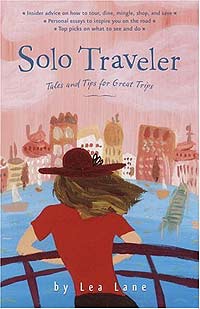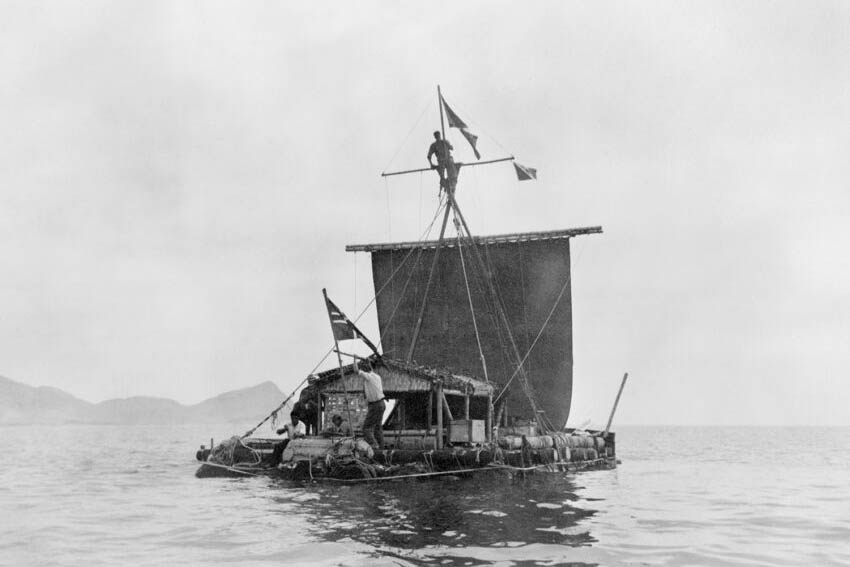
Solo Travel Isn’t the Worst Way to Travel…for Some, it’s the Best!
By MeiMei Thai

Traveling alone may not be a great idea for many people. Maybe, because they’re scared of being lonely, getting lost, being bored, or having nobody to talk to. But solo travel may be ideal. In Solo Traveler, Lea Lane reveals her own experiences and stories about traveling alone.
Lane’s light comical tales gives readers a laugh, but they also give good advice on how to travel solo. Not only can she make you chuckle, but she also shows readers how you can still have fun and enjoy every minute of it when you travel alone. By reading this book, you’ll learn how to be a better solo traveler.
Below is an excerpt about several of Lea Lane’s encounters with wild animals. The thrills, excitement, and fears make the whole experience worthwhile.
Close Encounters of the Brrr-d Kind
At times during my travels, I seemed to actually cross the divide between species (and no, I wasn’t dreaming of elephants on the ceiling; I was sober). Some examples:
The almost freezing waters of the Bay of Fundy off the east coast of Canada provide one of the great feeding and breeding grounds for whales. But boy it’s nippy out on the boats — I wore four layers, a hat, and gloves, and stayed under a wool blanket, and I was still chilled.
And it was August. The experience was worth every shiver. The endangered Right Whale remains here — about 400 left on the Earth. And on the day I went out, we saw about 20 percent of them! Some days none appear. A thrill, indeed.
In Lapland, I shared a sledge with a fellow journalist, dog sledding across the Finnish fells. The speed was surprising, but more so was how the dogs were wired to work. At our lunch break of hot reindeer soup in the snow, the dogs ate heartily, and maybe after maybe half an hour they barked and yelped and howled, ready to get back to their heavy task.
We were tired and wanted laze a bit, and I watched their keen eyes and forceful bodies. One dog kept barking at me, as if begging, “Get back on the sledge, dummy, and let me pull you across the snow again.” When we finally got going, I swear he smiled at me.
A Life-Cycle Event
Cruising the Inside Passage of Alaska, animals were teeming as if in a nature documentary: otters gamboled in the icy waters, seal colonies sprawled over rocks, haughty bulls overlooking their barking harems of blubbery females. Eagles swooped from towering pines to talon wriggling fish.
But my favorite moments were on shore, in an evergreen forest along a river. Some friendly passengers had invited me to join them (remember, invitations happen, if you smile); I opted for a solo ramble. The river flashed silver with salmon leaping toward their spawning ground.
I walked a mile or so and stood on a bridge as hundreds of intrepid fish lay gasping along the river bottom, draining color and form as I watched. Muscled and forceful a few miles before, they were now deflated as balloons, littering the river bottom.
As I absorbed this drama, couples and groups passed by, chatting away about the stock market and totem poles, not noticing the solemn, life-cycle event right there beside them, just under the water. Two spindly legs and big thumbs. They’ll go about their business — eating, feeding, mating, even killing — if you keep a minimum distance, usually a few meters away, and stay quiet.
Don’t Scare Them Off!
 Crowds, loud noises, and unexpected movements put animals off. Near a lodging road, on a lake in northern Maine, I kayaked by a heavily racked moose, nibbling in the water a couple of hundred feet away.
Crowds, loud noises, and unexpected movements put animals off. Near a lodging road, on a lake in northern Maine, I kayaked by a heavily racked moose, nibbling in the water a couple of hundred feet away.
I stopped paddling and remained still.
The moose continued eating, with an occasional come-hither glance; more likely, “Not another stupid human watching me eat!” All was well until I sneezed. The moose bounded away into the woods.
Even if you’re with a group, try to break away from the heard for at least a while and solo travel — unless you’re instructed not to, or it feels wrong. Be patient, respectful, still, and alert.
The unexpected is part of the animal experience. For years I enjoyed walking by myself in a nature preserve in Westchester County, New York. The land abuts a dairy farm, and I often stopped to watch the black-and-white cows — fascinated by everything from their tagged ears to their pink udders.
One day in the field across the cinder trail from the bovines, separated from me by a crumbly fieldstone wall and a bit of barbed wire, a massive bull glowered for a minute or so, and pawed the ground, as if pondering to tryst or a charge.
I couldn’t move, and he kept staring. I backed away, slowly, down a hill, and never returned. And that was just a walk by a pasture. So pay attention, because you never know.
Get a Complete Safari Experience
If you travel to Africa, I suggest experience four types of safaris for the complete experience. Try to join as small a group as possible, or hire a private guide and take all the time you can afford.
By day. A daytime safari by jeep moves you quickly to track cape buffalo, rhino, lion, and leopard — and other large land animals, from zebra to elephant. My thrill was observing two lion cubs, about a week old, and finding a lion couple resting, exhausted, after many days of copulation. My other favorite experience was driving through a forest of giraffes, maybe 20 of them, nibbling the tops of acacia trees on either side of the road.
By night. On a night safari by jeep, you can find hyenas, civets, anteaters, and smaller nocturnal animals and birds, as well as larger animals, especially by salt licks and water holes. Your armed guide will shine his light into the dark plains, and suddenly you will see eyes gleaming back, and notice rustlings in the brush. Eerie, and wonderful.
On Foot. During a walking safari, you can closely observe smaller critters and plants and sometimes from afar and downwind, a heard of elephants, or other large beasts. When you walk you feel the danger and the wonder – – and you’ll need an armed sharpshooter guy. I asked mine if he ever used his gun. “Yes,” he replied, “but I have only one bullet. That’s all I have time for.”
Hippo Encounter
On water. A river safari introduces you to crocodiles, hippos, and glorious birds, as well as the big animals that come to drink and play and get-it-on, down by the riverside. Gliding along next to crocs is a safe thrill if you keep your appendages in the boat.
In Malawi, Africa, in a camp by a river, our safari group was warned not to walk alone in the evening. Hippos come ashore then to nibble at the foliage, and when a hippo gets hyper, no animal is more dangerous. But the guard with the rifle never came to my tent to escort me to dinner, and I was hungry.
After about a half hour of waiting, I ventured out gingerly, staying on the path and walking fast. I wasn’t alone. Ahead of me in the dark I made out a hefty woman, bending over. She must be on her way to dinner too, I figured. But as I got closer I realized that it wasn’t a hippy lady.
It was a lady hippo.
I ran, screaming (silently) into the closest tent, where three women who had also encountered the hippo were huddled together. We were all scared, and all hungry. Finally, someone noticed we weren’t at dinner, and the man with the rifle rescued us. The hippo had returned to the river, its dinner over. I took warnings more seriously after that.
Click Below to Buy this Book from Amazon:
Solo Traveler: Tales and Tips for Great Trips, 1st Edition (Special-Interest Titles)
- The Wild Mississippi: 2340 Miles Across Ten States - April 8, 2024
- Exploring the Floating Villages of Tonle’ Sap Lake - April 3, 2024
- Woman Traveling Solo on Turkish Buses - March 27, 2024





